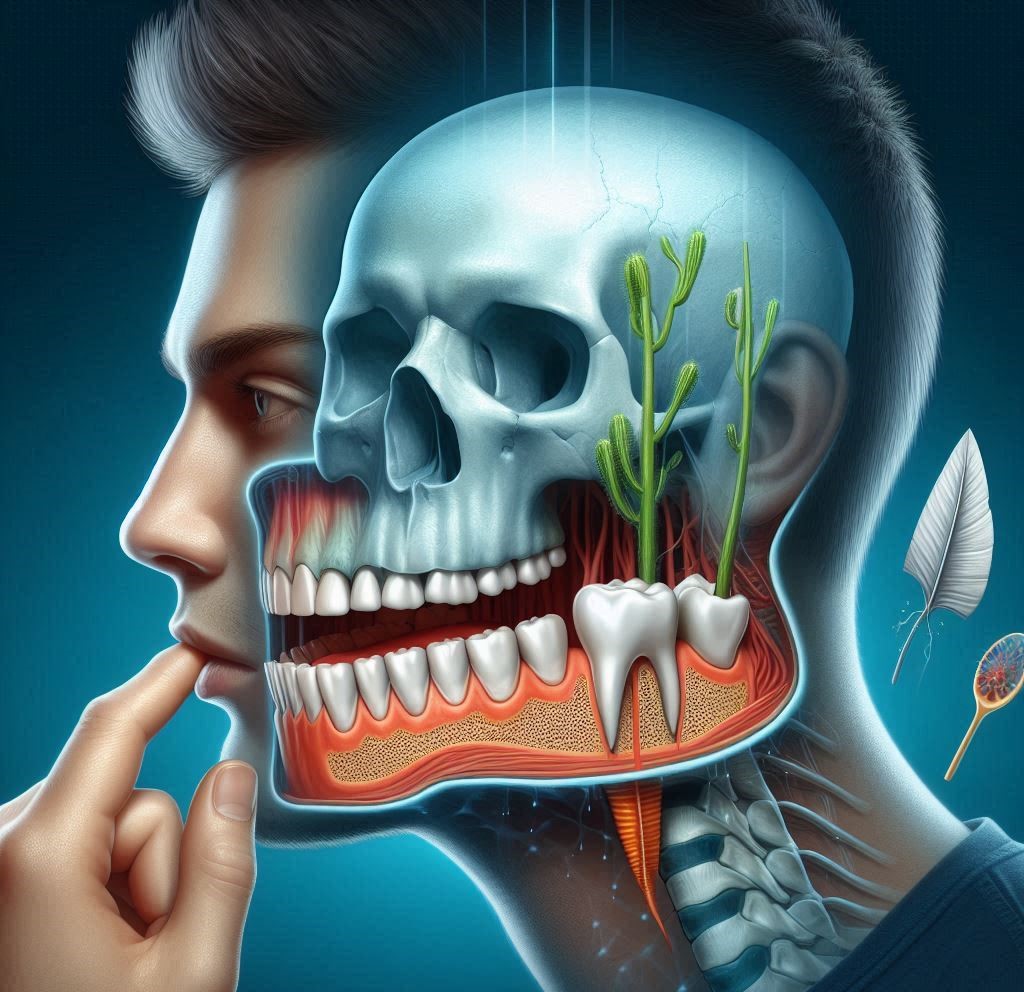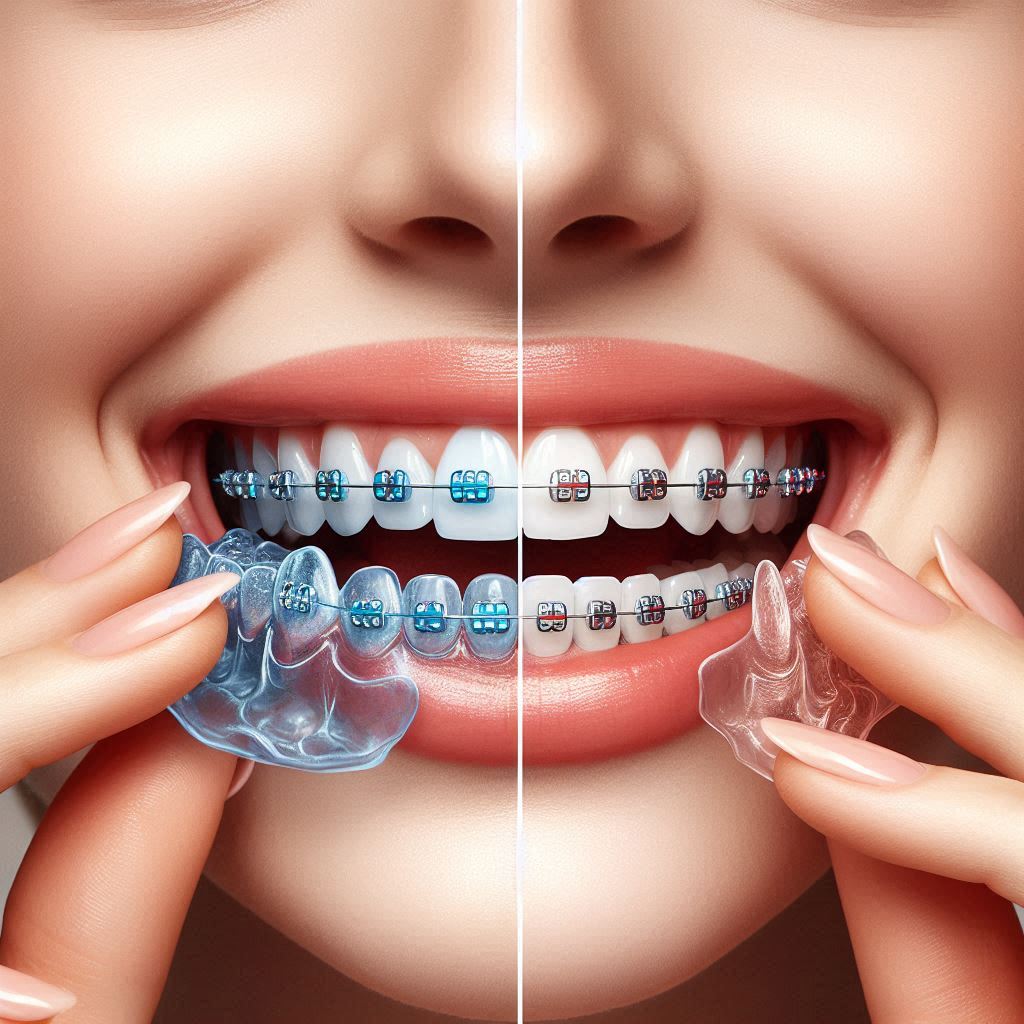Oral health is often associated with the condition of your teeth and gums. However, the foundation of a healthy mouth extends beyond just brushing, flossing, and visiting the dentist. One critical yet often overlooked component is the bone structure inside the mouth, particularly the jawbone. Bone growth in the mouth, whether gradual or sudden, can play a significant role in your overall dental health, but not all changes are immediately visible or obvious.
Some types of bone growth may occur quietly, without any obvious signs or symptoms, making them “hidden” from the naked eye. However, this hidden bone growth can significantly impact your dental health, leading to problems that are not immediately apparent. Whether it’s due to age, genetics, or environmental factors, the changes in bone structure can affect everything from tooth alignment to jaw function, gum health, and even the aesthetics of your smile. These silent changes can sometimes result in more severe issues, such as difficulty chewing, chronic pain, or even disorders like temporomandibular joint (TMJ) dysfunction.
This guide will explore the phenomenon of hidden bone growth in the mouth—what it is, why it matters, and how it can affect your dental health. By understanding the silent impact of bone growth, you can become more proactive in managing your oral health and preventing complications before they arise.
Understanding Bone Growth in the Mouth
The Structure of the Mouth and Its Bones
The mouth is a complex structure, and its bones play an essential role in supporting the teeth, enabling movement for chewing, and providing stability to the entire facial region. The main bones in the mouth include the maxilla (upper jaw), the mandible (lower jaw), and the alveolar bone (which holds the teeth in place). The bones in the mouth are not static; they are continually remodeling, growing, and adapting to the needs of the body.
- Maxilla (Upper Jawbone): This bone forms the foundation for the upper teeth and the roof of the mouth. It also plays a role in supporting facial features like the nose and the cheeks.
- Mandible (Lower Jawbone): The mandible is the largest and strongest bone in the face, responsible for holding the lower teeth and allowing movement of the mouth for speech and chewing.
- Alveolar Bone: This bone holds the roots of the teeth and is critical in maintaining dental stability. Changes in this bone structure can result in tooth loss or misalignment.
Types of Bone Growth (Normal vs. Abnormal)
Bone growth in the mouth occurs naturally, particularly during childhood and adolescence as the jaw develops. However, not all bone growth is normal or beneficial to dental health. Bone growth can be categorized as either normal (physiological) or abnormal (pathological).
- Normal Bone Growth:
- Bone development in early life, particularly in childhood, is vital for the proper alignment of teeth and jaw structure.
- This includes the gradual eruption of teeth and the natural growth of the jaw that accommodates this process.
- Abnormal Bone Growth:
- In some cases, abnormal bone growth occurs due to a variety of factors, including genetics, injury, or disease. This can include excessive bone formation or resorption.
- Conditions such as osteomas, osteosarcomas, or fibrous dysplasia can cause abnormal bone growth in the mouth, leading to changes in dental health, bite misalignment, and more.
The Role of the Jawbone in Dental Health
The jawbone plays a critical role in maintaining the alignment of your teeth and ensuring the function of your mouth. Any changes in the shape or density of the jawbone can directly affect the positioning of the teeth and the bite. For example, the development of bone spurs or excess bone growth in the jaw can lead to overcrowding of teeth or misalignment, causing difficulty in biting or chewing.
Common Causes of Bone Growth in the Mouth
Several factors can contribute to bone growth in the mouth, including:
- Genetics: Family history plays a significant role in how the bones in the mouth grow and change over time.
- Age: As you age, the bones in your body, including those in your mouth, may undergo changes that affect dental health.
- Trauma or Injury: Accidents or injuries to the face or jaw can trigger abnormal bone growth as the body tries to heal.
- Hormonal Changes: Hormones, particularly during adolescence and menopause, can affect bone density and growth patterns.
- Diet and Lifestyle: Poor nutrition, smoking, or alcohol use can influence bone health and contribute to conditions like bone resorption or the development of cysts.
Hidden Bone Growth: What Does It Mean?
What is “Hidden” Bone Growth?
Bone growth in the mouth may not always be immediately noticeable, which is why it’s often referred to as “hidden.” Unlike visible changes in teeth alignment or gum inflammation, bone growth may occur beneath the surface or in areas that are not easily seen without the help of imaging tools. Hidden bone growth refers to the formation of additional bone in the jaw or mouth, which may not be accompanied by obvious symptoms but can significantly affect oral health in the long term.
Hidden bone growth may involve conditions such as:
- Excessive bone growth in the jaw or around the teeth that leads to crowding or bite issues
- Formation of bone spurs that can impinge on surrounding structures, causing discomfort or limited mouth movement
- Changes in the alveolar bone that affect the stability of teeth and their ability to remain firmly in place
These changes often happen gradually, which makes them difficult to detect without regular dental check-ups.
Why Bone Growth in the Mouth is Sometimes Undetected
Several reasons explain why bone growth in the mouth can be hidden or unnoticed for long periods:
- Slow Progression: Bone growth in the mouth typically occurs at a slower pace, often taking years to produce noticeable effects. This slow change might not show up immediately in terms of symptoms or physical manifestations.
- Lack of Pain or Discomfort: Unlike tooth pain or gum inflammation, bone growth is often asymptomatic. Many people may not experience pain unless the bone growth starts affecting the teeth, gums, or jaw joint.
- Misdiagnosis or Oversight: Bone changes may sometimes be overlooked in routine dental exams, especially when they don’t result in obvious changes to tooth appearance or function. The need for imaging like X-rays or CT scans often goes unnoticed unless there’s an underlying issue.
- Location of Growth: Some forms of bone growth occur deep within the jaw, or in areas like the sinuses or beneath the gums, making them more difficult to detect during a visual exam.
Signs That Bone Growth May Be Occurring
Although bone growth in the mouth is often hidden, there are certain signs that may suggest an underlying issue:
- Changes in Bite: If you notice a shift in how your teeth align, such as discomfort while chewing or a noticeable unevenness in your bite, this could signal bone changes beneath the surface.
- Jaw Pain or Tension: Pain or discomfort in the jaw, especially when chewing or speaking, can be a sign of bone-related changes affecting the temporomandibular joint (TMJ).
- Difficulty Opening or Closing Mouth: If it becomes harder to fully open or close your mouth, it could be due to bone growth impeding the motion of your jaw.
- Tooth Mobility: Excessive bone growth in the alveolar bone can either loosen teeth or cause overcrowding, resulting in shifting teeth or even tooth loss.
- Gum Recession: Uneven bone growth can cause gum tissue to pull back or recede from the teeth, leading to sensitivity or other periodontal problems.
The Role of Age, Genetics, and Lifestyle in Bone Changes
Bone growth in the mouth is influenced by several factors:
- Age: As people age, their bone density tends to decrease, which can lead to conditions like osteoporosis or changes in bone structure. However, some people experience pathologic bone growth, particularly in later years, as their bones become more prone to growth or resorption.
- Genetics: Genetic predisposition plays a significant role in how bone develops and remodels in the mouth. People with a family history of certain bone-related conditions (like jaw malformations or bone tumors) may be more likely to experience similar issues.
- Lifestyle Factors: Diet, smoking, alcohol consumption, and overall physical activity can affect bone health. For instance, a calcium-deficient diet may make bones weaker, while smoking can slow bone healing and disrupt normal bone remodeling.
The Impact of Hidden Bone Growth on Dental Health
Effects on Tooth Alignment and Bite (Malocclusion)
Hidden bone growth can directly affect tooth alignment, resulting in malocclusion—an improper bite. When extra bone forms around the jaw or teeth, it can push teeth out of their natural alignment or create space between teeth. This misalignment can interfere with chewing, lead to uneven wear on the teeth, or cause further dental issues, such as tooth grinding (bruxism) or TMJ pain.
For instance, mandibular hyperplasia (excessive growth of the lower jaw) can cause an overbite or underbite, where the upper and lower teeth don’t line up properly. This misalignment can strain muscles in the jaw and face, leading to pain, difficulty chewing, and an increased risk of tooth fractures.
Difficulty with Chewing and Speech
As the bones in the mouth change, especially in cases of hidden bone growth, it can interfere with the normal function of chewing and speech. For example:
- Restricted jaw movement: The formation of bone spurs or abnormal growths in the jaw can restrict how much the jaw can open and close, making it difficult to chew food properly.
- Speech impediments: Misalignment of the jaw caused by abnormal bone growth may affect the way sounds are produced when speaking, leading to speech difficulties.
Impact on Gum Health and Inflammation
Excessive bone growth can also impact the gums, particularly the alveolar bone (which holds the teeth in place). If the bone changes shape, it can lead to gum recession, where the gums pull away from the teeth. This can expose the roots of the teeth, making them more susceptible to decay and sensitivity.
Additionally, bone changes can cause inflammation in the gums or surrounding tissues, as the body reacts to irregular growth patterns. This inflammation may lead to periodontal diseases, which in turn can weaken the bone even further, creating a vicious cycle.
How Bone Growth Can Lead to TMJ Disorders
Hidden bone growth in the jaw can directly affect the temporomandibular joint (TMJ), the hinge-like structure that connects the jaw to the skull. If abnormal bone growth occurs around the TMJ, it can disrupt normal jaw movement and lead to painful TMJ disorders. Symptoms may include:
- Jaw pain or tenderness
- Clicking or popping sounds when opening or closing the mouth
- Headaches or neck pain
- Difficulty chewing or biting
TMJ disorders are often exacerbated by misalignment of the jaw caused by hidden bone growth.
Hidden Bone Growth and Its Relation to Oral Diseases
The changes in bone structure can increase the risk of several oral diseases. For instance, when the alveolar bone is affected by hidden growth, it can lead to the following:
- Periodontal Disease: The bone and gums provide a supportive environment for teeth, and when bone changes occur, they can lead to the early stages of gum disease, causing bleeding, swelling, and infection.
- Tooth Loss: If bone growth is significant enough, it can result in the loosening of teeth or even tooth loss due to insufficient support for the roots.
Diagnosis of Hidden Bone Growth
The Role of X-rays and Imaging in Detecting Bone Changes
While hidden bone growth can often go unnoticed in routine exams, modern dental imaging techniques such as X-rays, CT scans, and MRIs are essential in identifying bone changes early. X-rays provide a clear picture of the bone structure around the teeth and jaw, allowing dentists to spot abnormalities such as bone spurs, cysts, or excessive growth. In some cases, 3D imaging or digital scans may be necessary for more detailed evaluations.
How Dentists Identify Hidden Bone Growth During Routine Exams
A thorough dental exam typically includes checking for signs of bone changes, even if no obvious symptoms are present. Dentists will review your dental history, ask about any discomfort you may be experiencing, and assess any changes in your bite or teeth alignment. If they suspect that hidden bone growth is affecting your dental health, they will recommend appropriate imaging or refer you to a specialist for further examination.
When to Consult a Specialist
If hidden bone growth is suspected or detected, your dentist may refer you to an oral surgeon or orthodontist. These specialists can help diagnose the exact nature of the growth and determine the most appropriate course of treatment. In some cases, a biopsy may be necessary to rule out pathological bone growth or conditions such as tumors or cysts.
Treatment Options for Hidden Bone Growth
Non-surgical Treatments
In many cases, the effects of hidden bone growth can be managed through non-surgical treatments. For instance:
- Orthodontics: Braces or clear aligners can help realign teeth that have been pushed out of place by bone growth. In some cases, bite adjustments may be necessary to improve the overall alignment of the teeth and jaw.
- Mouthguards: For those experiencing discomfort or jaw issues due to bone growth, a custom mouthguard may help protect the teeth and reduce stress on the jaw joint.
Surgical Treatments
For more severe cases of bone growth, surgical intervention may be required. This could involve:
- Bone Reshaping: In cases of excessive bone growth, oral surgeons may need to reshape or remove parts of the jaw to restore proper function and alignment.
- Jaw Surgery: In extreme cases of misalignment caused by bone growth, a surgical procedure to reposition the jaw may be recommended to improve bite and restore proper jaw function.
Advanced Dental Procedures
In cases where bone loss is more severe, procedures like bone grafting or dental implants may be required to restore structure and stability. Bone grafts are often used to fill in areas where bone resorption has occurred, and implants can replace teeth that have been lost due to bone changes.
Preventive Measures
The best treatment for hidden bone growth is prevention. Maintaining good oral hygiene, staying on top of dental check-ups, and leading a healthy lifestyle (including eating a balanced diet rich in calcium and vitamin D) can help minimize the risk of bone-related dental issues.
Conclusion
The silent, hidden impact of bone growth in the mouth is something many people may not fully realize until problems arise. This phenomenon, though often undetected, can have serious consequences on overall dental health, affecting everything from tooth alignment to jaw function and even oral disease. Understanding the causes, recognizing the early signs, and seeking timely diagnosis and treatment can help mitigate the long-term effects of hidden bone growth.
By prioritizing regular dental check-ups and maintaining a healthy lifestyle, you can stay ahead of potential bone changes and ensure that your mouth—and the bones within it—remain healthy and functional for years to come.
SOURCES
American Dental Association (ADA). 2020. Oral health and bone health: A guide to understanding the link between oral care and bone density. Chicago, IL: American Dental Association.
Baker, J., & Davis, P. 2019. Bone growth and malocclusion: A study of the effects of hidden bone changes on dental alignment. Journal of Clinical Dentistry, 12(3), 85-98.
Chen, S., Lo, E., & Yuan, H. 2018. The role of imaging in detecting bone growth in the jaw. Journal of Oral and Maxillofacial Surgery, 21(4), 325-336.
Harrison, M., & Robinson, T. 2021. Bone health and orthodontics: The silent influence of hidden bone changes on dental health. The International Journal of Orthodontics, 15(2), 112-124.
King, D., Foster, S., & Walker, K. 2017. Jawbone abnormalities and their impact on chewing and speech function: A clinical review. Journal of Prosthodontics, 25(8), 735-742.
MacDonald, W., Stewart, L., & Thompson, P. 2016. Abnormal bone growth in the mouth: Clinical presentation and management strategies. British Journal of Oral and Maxillofacial Surgery, 55(5), 404-410.
Parker, R., Higgins, L., & Williams, M. 2022. Hidden bone changes and their effects on gum health: An emerging concern for dentists. Journal of Periodontology, 93(6), 647-656.
Sullivan, C., & Zimmerman, L. 2015. Hidden bone growth in the maxilla and mandible: The role of genetics and environmental factors. Journal of Craniofacial Genetics and Developmental Biology, 36(2), 78-85.
Wang, X., Li, B., & Zhang, T. 2018. Bone remodeling in the jaw: Implications for oral health and orthodontic treatment. Orthodontics & Craniofacial Research, 21(1), 34-45.
Williams, J., & Dixon, M. 2019. Advances in diagnostic imaging for detecting hidden bone growth in dental patients. Journal of Diagnostic Imaging in Dentistry, 7(4), 188-193.
HISTORY
Current Version
March 3, 2025
Written By:
SUMMIYAH MAHMOOD




